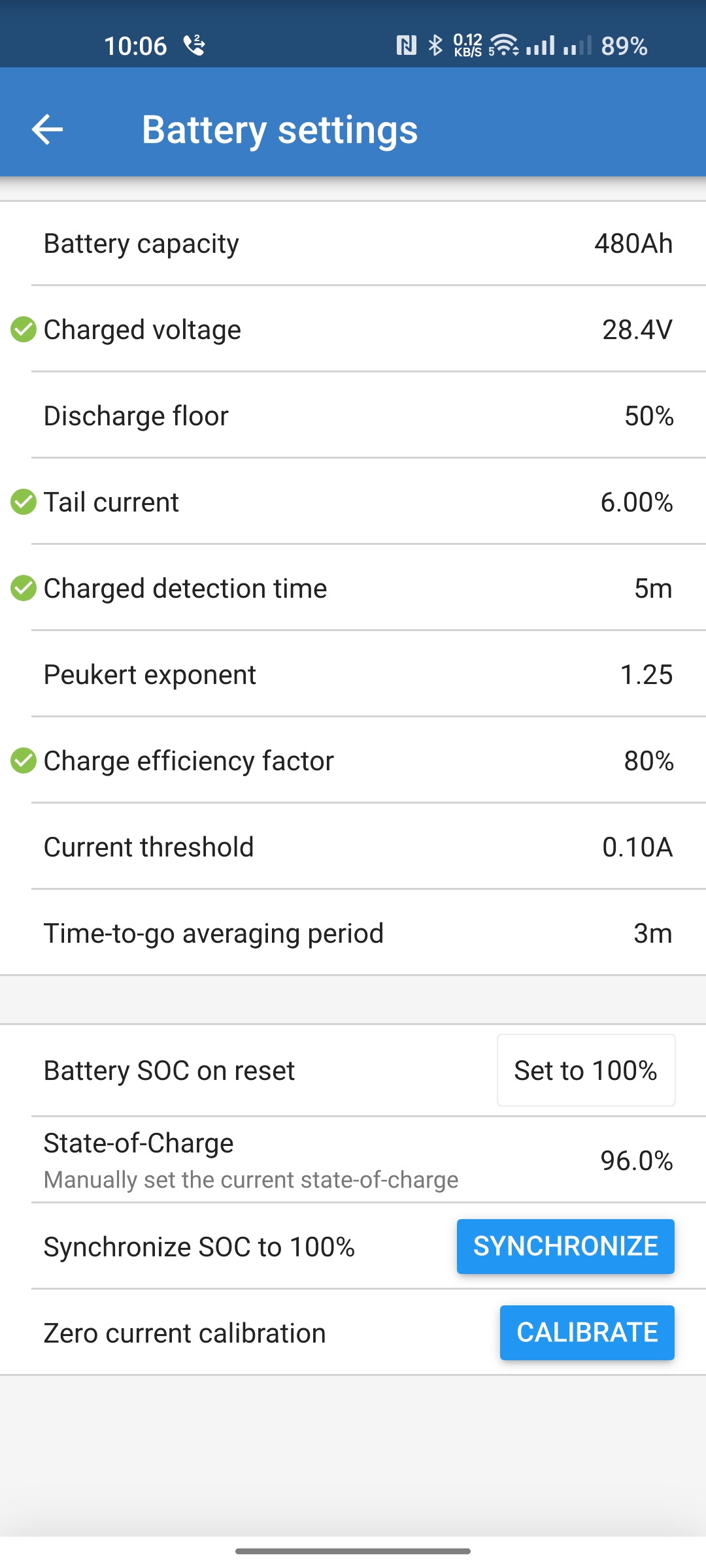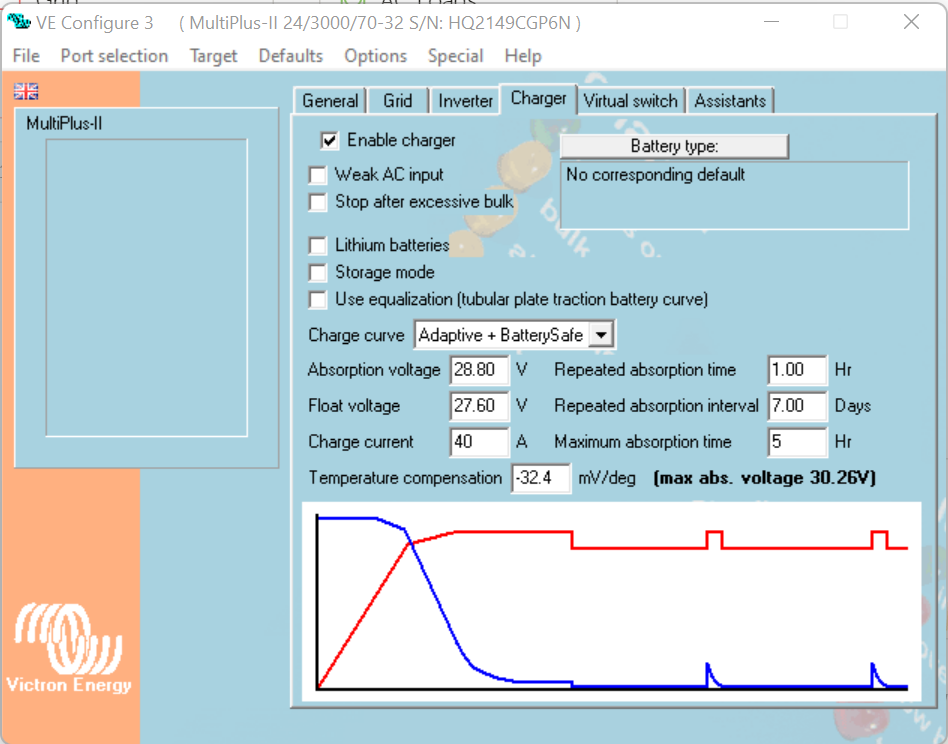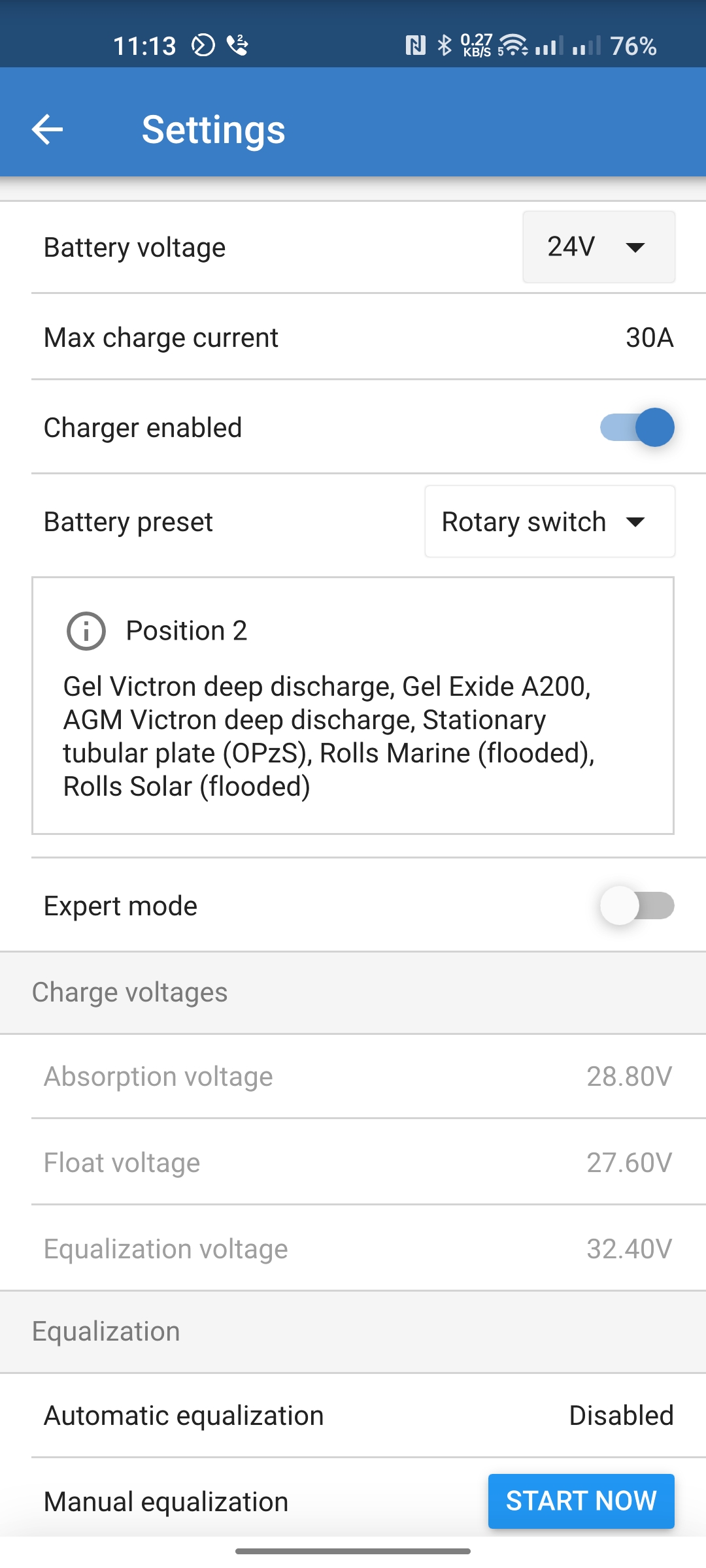Hi all,
I am seeking some advice for optimising my SmartShunt settings, as the SoC reflected at present does not appear to be very accurate in my setup (SoC seems to be overly optimistic). I have read and re-read so many posts and watched many videos (including the Victron published ones) on this subject, however I am struggling to confirm the best practice values for my setup.
I have in an ESS setup:
- 8x Leoch DT126 240Ah (C20) FLA batteries in a 4s2p configuration at 24V 480Ah.
- SmartShunt 500A
- 2x MPPT 100/30
- MultiPlus ii
- Cerbo Gx
My questions only concern the settings on the SmartShunt. Please see the below image for my current settings, which I have determined from reading many different posts on the best practice configuration for the SmartShunt in my system design.

I so far believe I understand that:
- Charged Voltage should be set to 0.4V under Absorbtion (which is 28.8V on the MPPT's and the MP ii charger)
- Tail current should be set to somewhere between 1% to 6% (6% is a fairly high current though: 480 / 6 * 100 = 28.8A). 6% to me seems too high though, and will result in the SmartShunt resetting the SoC to 100% before the battery is fully charged (as it's still drawing nearly 30A)? Would a value of 1% be better? What are the pros and cons?
- Charged detection time of around 5 minutes.
- Charge efficiency factor of 80% (which is also set on the MP ii charger)
Here are my Multiplus ii and MPPT charger settings for reference:


I look forward to providing you with further information as required. Many thanks.
